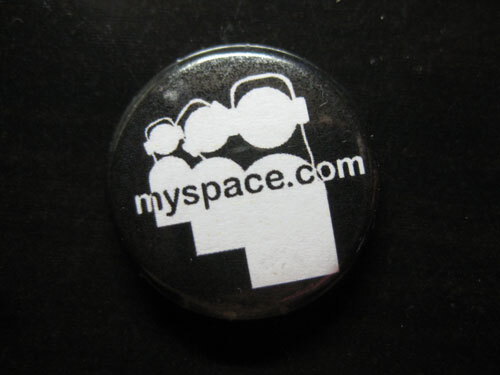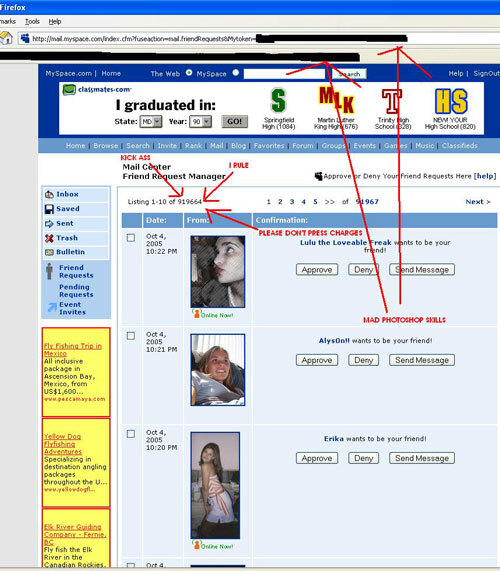
(Bruthanick/Flickr)
Why MySpace’s defining feature is really an extremely lucky accident
When people talk about MySpace, the definition of “space” that people often think back to isn’t the one that the developers of MySpace intended. Had things gone a little bit differently, it would have been just as cookie cutter as every other social medium platform on the internet.
But a combination of a quick departure and an unforced technical error created an unexpected opportunity for a new social network. In the 2009 book Stealing MySpace, the story of the platform that made Tom everyone’s friend, author Julia Angwin (now of The Markup) notes that the pivotal move that made MySpace relevant was twofold. One, the network essentially didn’t care about using real names, something its early competitor Friendster controversially did; and second, the company made a mistake in programming its website that opened up an entire world to its users.
Duc Chau, the original lead developer of MySpace, ended up leaving because he found the work boring—essentially his technical skill, honed with an early advertising startup, wasn’t being taxed by the site’s platform. Chau’s departure was a problem for MySpace’s owners, as they weren’t aware of the language he used, Perl.
So the creators of MySpace used ColdFusion, a web-development platform that was owned by Macromedia at the time under a proprietary commercial license, not going open-source until years later. (By contrast, competitors like Facebook were built using open-source languages like PHP.) On the fly, developers Gabe Harriman and Toan Nguyen, building the site on the cheap, quickly rebuilt the platform in a language they knew. And in haste, Nguyen forgot to turn on a feature that prevented end users from adding HTML into forms.
“His mistake allowed users to build colorful backgrounds and wallpaper and load them onto their MySpace pages,” Angwin wrote. “Suddenly teenage girls could decorate their MySpace page with hearts and glitter and smiley faces the same way that they were decorating their lockers and book bags.”
And this mistake was not immediately apparent to MySpace’s staff, and once they caught it, they considered fixing the error, but ultimately decided to keep it, believing that the users knew best.
This decision was a pure hack all the way around, a stumble into a defining feature that helped give it an unintentional connection to Geocities sites from half a decade prior.
It also caused massive problems down the line—as WireDelta notes, the site was not built to scale up for the hundreds of millions of users it would eventually have, leading to the site being reprogrammed onto another proprietary platform, Microsoft’s ASP.NET, in 2005. The happy accident that allowed MySpace to grow—the ability to modify pages—remained.

The Samy worm broke MySpace and won Samy a million friend requests. (Samy Kamkar)
This would prove a problem over time, though. That year, the weaknesses in MySpace’s infrastructure were exploited by a 19-year-old hacker who used a cross-site scripting (XSS) attack to gain a million friends through an aggressive worm. The weaknesses in the security code, the same ones that allowed for all those background images and weird fonts, let the Samy worm do a lot of damage, quick, and forced MySpace to boost its security in the process.
(Side note: An early Facebook employee, Chris Putnam, used a similar worm to make Facebook profiles look like MySpace profiles … which earned him a job with the company.)
As MySpace matured, professional marketers tried to make an imprint on the platform by raising the bar for the site’s design by using it to promote things—often giving popular bands a glossy sheen on their MySpace profiles.
Oneupweb, a Michigan digital marketing firm, bet big on MySpace back in the day, but came away from it with a bit of a sour feeling, as reflected in a 2010 blog post about MySpace, right around the time most had moved to Facebook and Twitter for good. Author Tony Owen noted that he was fairly talented with the platform, but he felt that many others weren’t, and that degraded the platform as a whole:
However, aside from web developers, there were few to ever master the art of designing MySpace profiles. Consequently creating a digital landscape of Geocities-like pages stoutly serving as eyesores and annoyances, rather than functional personal pages and profiles.
Poorly constructed MySpace profiles could undoubtedly freeze-up web browsers due to deformed coding, or as a result of users placing high-bandwidth rudiments in their profiles—such as video, graphics, and flash. These could be set to auto play on load. And when you have multiple items set to play on load, you have sounds playing over other sounds—creating audio chaos known as the train wreck effect.
So, let’s be clear—MySpace was often a shitshow of profiles that broke apart because its killer feature was a product of bad coding rather than a well-thought-out concept, but it was still an important one because of what it represented.
The problem with MySpace and design is that it should have been built with customization in mind, but because it wasn’t, its structural weaknesses (later compounded by its business weaknesses) ensured that it would eventually falter once and for all.